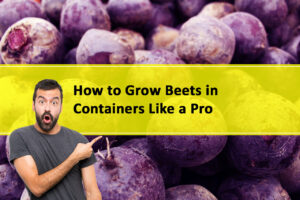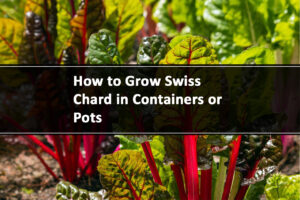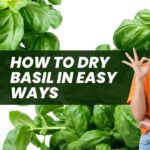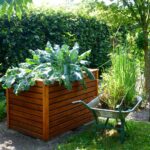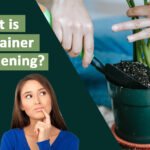Beautiful Plants For Your Interior
Greenery on the Rise: What is container gardening?
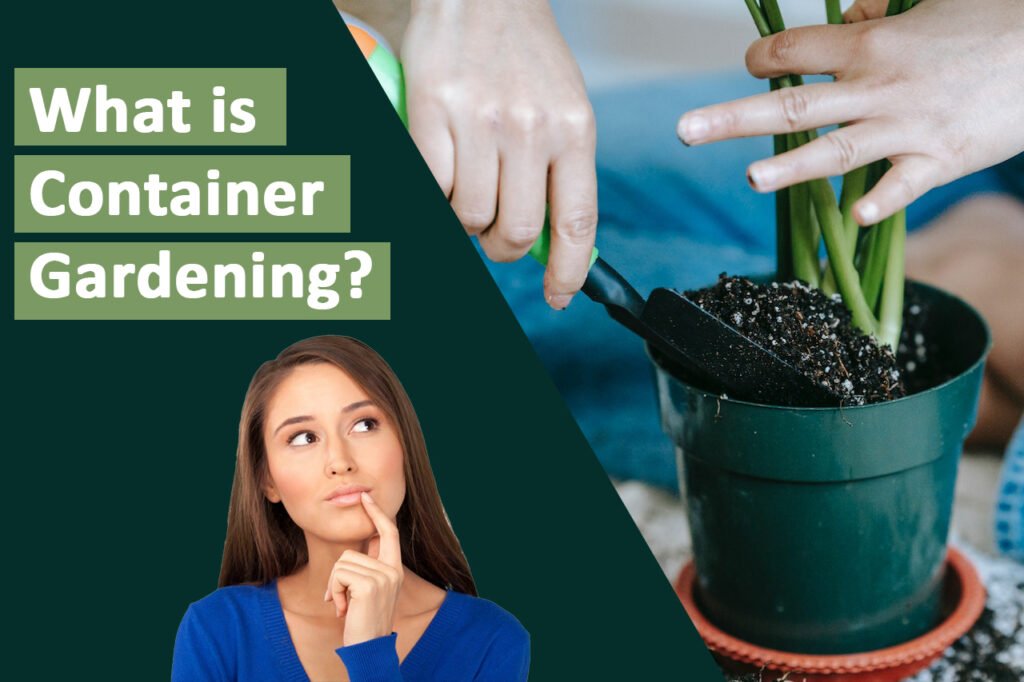
Are you interested in gardening but don’t have a large outdoor space? Container gardening might be the perfect solution for you. In this guide, we will explore the fascinating world of container gardening and answer the question, “What is container gardening?” This popular gardening technique allows you to grow a variety of plants in containers, making it ideal for individuals with limited space, such as balconies, patios, or small yards. Container gardening offers a unique and versatile way to cultivate plants and beautify your surroundings. Let’s delve deeper into the world of container gardening and discover the wonders it has to offer.
What is Container Gardening?
Container gardening refers to the practice of growing plants in containers rather than on the ground. It allows you to create a portable garden that can be easily moved or rearranged according to your preferences. Containers can vary in size, shape, and material, providing flexibility in terms of design and plant selection.
History of container gardening
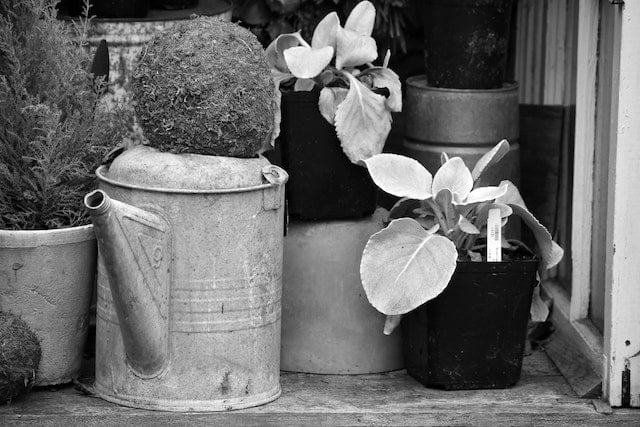
Container gardening has a long history that dates back thousands of years. Here is a brief overview of the history of container gardening:
Ancient Times:
Container gardening can be traced back to ancient civilizations such as the Egyptians, Romans, and Greeks. In these cultures, people used various types of containers, including earthen pots and urns, to grow plants. The Egyptians were particularly skilled in container gardening and grew plants in pots made of clay, stone, or woven baskets.
Medieval and Renaissance Periods:
During the Middle Ages and Renaissance periods, container gardening gained popularity in Europe. Monastic gardens, such as those in medieval monasteries, utilized containers to grow medicinal herbs and vegetables. Containers made of terracotta and wood were commonly used during this time.
18th and 19th Centuries:
In the 18th and 19th centuries, container gardening expanded as explorers brought back exotic plants from around the world. Wealthy Europeans and Americans began cultivating these new and rare plants in containers, often displaying them in conservatories and orangeries. The use of decorative containers made of porcelain and cast iron became fashionable.
20th Century:
Container gardening continued to evolve in the 20th century. As urbanization increased, people living in apartments and homes with limited outdoor space turned to containers for gardening. The development of lightweight and durable materials like plastic revolutionized container gardening, making it accessible to a wider range of people.
Modern Times:
Container gardening has gained tremendous popularity in recent decades. It has become a practical solution for urban dwellers, allowing them to create green spaces on balconies, rooftops, and small patios. With advancements in technology, self-watering containers, and vertical gardening systems have been developed, further expanding the possibilities of container gardening.
Today, container gardening is not only practiced for its practicality but also for its aesthetic value. People use containers to create beautiful displays of flowers, create herb gardens in their kitchens, or grow vegetables and fruits in limited spaces. It offers flexibility, mobility, and the opportunity to garden in various environments and climates.
Container gardening continues to evolve with innovative ideas, such as hydroponic and aeroponic systems, enabling people to grow plants without soil. It has become a versatile and accessible gardening method, enabling individuals to enjoy the benefits of gardening regardless of their living situation or available space.
Benefits of Container Gardening
Container gardening offers several advantages that make it an attractive option for both seasoned gardeners and beginners. Here are some key benefits:
- Space Efficiency: Container gardening is ideal for individuals with limited space or urban dwellers who lack a traditional garden plot. It allows you to utilize balconies, patios, or even windowsills to grow a variety of plants.
- Flexibility: Containers can be easily moved, allowing you to rearrange your garden as needed. This flexibility is particularly useful when dealing with changing weather conditions or adjusting sunlight exposure for different plants.
- Weed and Pest Control: Container gardening helps minimize weed growth and offers better control over pests and diseases. By keeping your plants in containers, you can reduce the risk of invasive weeds and limit the spread of pests.
- Accessibility: Containers can be elevated to a comfortable height, reducing the strain on your back and knees. This makes container gardening an excellent option for individuals with physical limitations or mobility issues.
Things to use for container gardening
Container gardening is a great way to grow plants in limited spaces or areas without access to traditional garden beds. Here are some essential things you’ll need for successful container gardening:
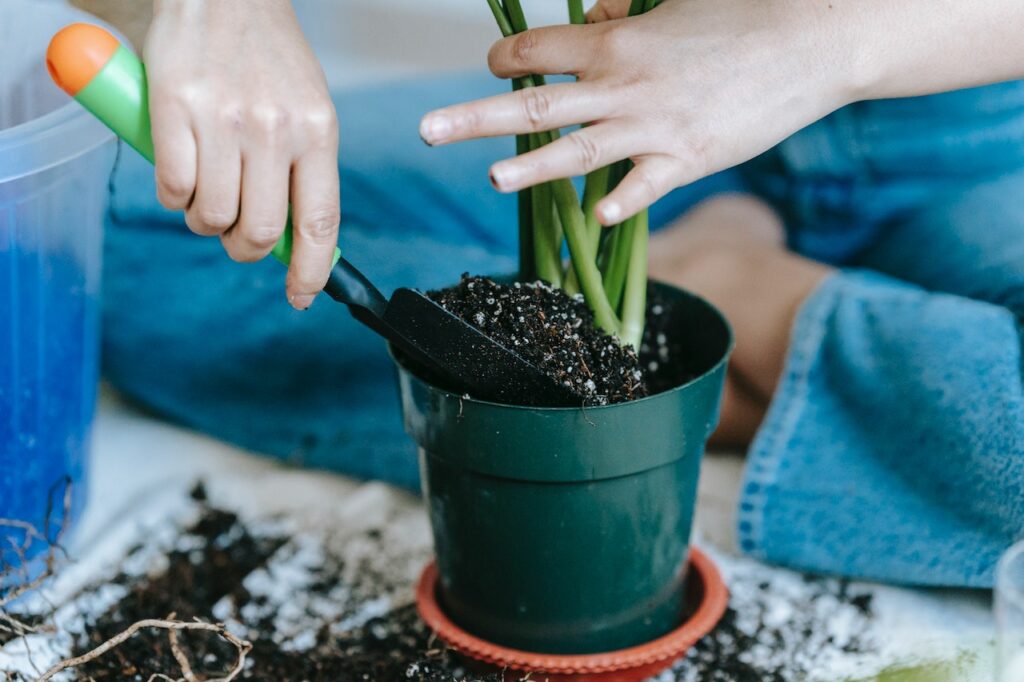
Choosing the Right Containers
Selecting the right containers is crucial for successful container gardening. Consider the following factors when choosing your containers:
- Size: The size of the container should correspond to the plants’ root system. Larger plants require deeper and wider containers, while smaller plants can thrive in smaller pots.
- Material: Containers are available in various materials such as terracotta, plastic, wood, or metal. Each material has its advantages and considerations, including weight, insulation, and drainage.
- Drainage: Ensure that your containers have proper drainage holes to prevent waterlogging, which can lead to root rot. If your chosen container lacks drainage holes, you can add them yourself using a drill.
Selecting the Right Soil
Choosing the appropriate soil is vital for the health and growth of your container plants. Follow these guidelines when selecting soil:
- Quality: Opt for high-quality potting soil that is lightweight, well-draining, and nutrient-rich. Avoid using garden soil, as it may be too heavy and compact for containers.
- Moisture Retention: Look for soil mixes that retain moisture while providing adequate drainage. This balance is essential to prevent overwatering or underwatering your plants.
- pH Level: Consider the pH requirements of your plants and choose a soil mix that aligns with their preferences. Most container plants thrive in slightly acidic to neutral soil.
Picking the Right Plants
When it comes to container gardening, plant selection plays a vital role in ensuring success. Keep the following factors in mind:
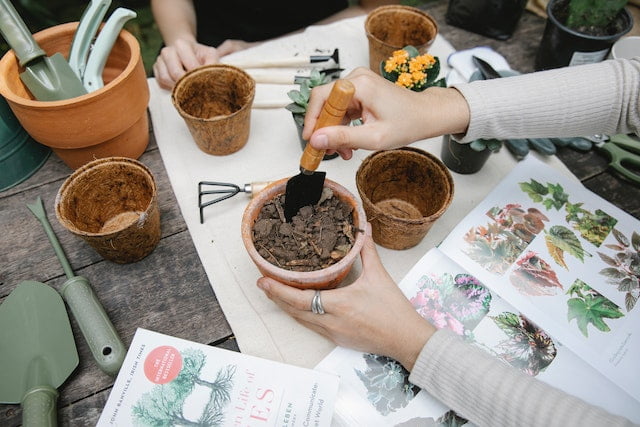
- Plant Size: Choose plants that are well-suited to the size of your containers. Taller plants may require staking or support, while trailing plants can spill over the edges, adding aesthetic appeal.
- Sunlight Requirements: Different plants have varying sunlight needs. Determine the amount of sunlight your chosen location receives and select plants accordingly. Shade-loving plants are ideal for areas with limited sunlight.
- Compatibility: Ensure that the plants you select are compatible in terms of water and light requirements. Group plants with similar needs together to simplify watering and care routines.
Proper Watering Techniques
Watering container plants can be a bit tricky, as they have different water requirements compared to plants in the ground. Follow these watering techniques:
- Watering Frequency: Container plants tend to dry out more quickly, so regular watering is essential. Monitor the moisture level by checking the soil’s top inch with your finger. Water when it feels dry to the touch.
- Watering Amount: Water your plants thoroughly until water drains out of the container’s drainage holes. This ensures that the entire root ball receives moisture.
- Watering Time: Water your plants early in the day to minimize evaporation and allow foliage to dry before nighttime. Avoid watering during the hottest part of the day to prevent scorching the plants.
Providing Adequate Sunlight
Sunlight is vital for the growth and development of plants. Consider the following tips for providing adequate sunlight to your container garden:
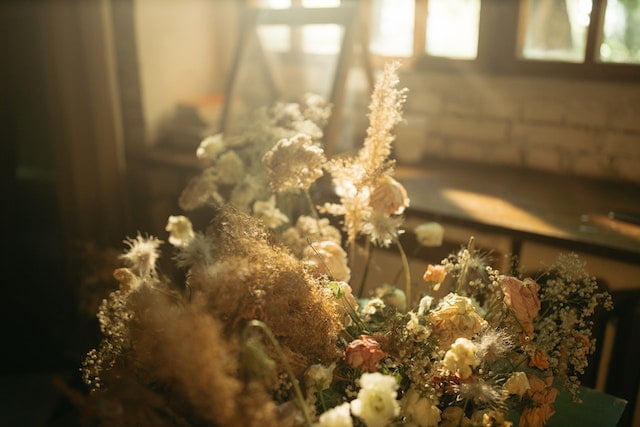
- Observe Sun Patterns: Identify the areas of your outdoor space that receive the most sunlight. Different plants require different levels of sunlight, ranging from full sun to partial shade.
- Rotate Containers: If certain areas receive more sunlight during specific times of the year, rotate your containers accordingly. This ensures that all plants receive an equal amount of sunlight throughout the growing season.
- Use Reflective Surfaces: Maximize sunlight exposure by placing reflective surfaces near your containers. This can include white stones, mirrors, or light-colored walls that bounce sunlight onto the plants.
Fertilizing Container Plants
Container plants rely on you for their nutrient supply. Follow these fertilization tips to keep your plants healthy:
- Choose the Right Fertilizer: Select a balanced, slow-release fertilizer specifically formulated for container plants. Avoid using excessive amounts of fertilizer, as it can lead to nutrient burn.
- Application Frequency: Fertilize your container plants according to the product’s instructions. Typically, applying fertilizer every four to six weeks during the growing season is sufficient.
- Supplement with Organic Matter: Enhance soil fertility by incorporating organic matter such as compost or well-rotted manure. This helps improve soil structure and nutrient retention.
Managing Pest and Disease
Container plants can still be susceptible to pests and diseases. Employ the following strategies to manage these issues effectively:
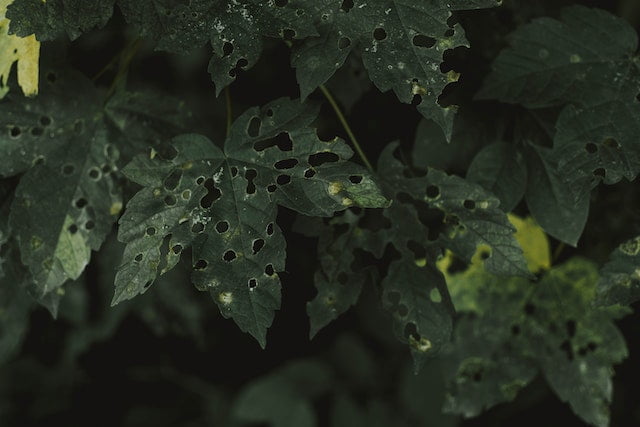
- Regular Inspections: Regularly inspect your plants for any signs of pests or diseases. Catching them early allows for prompt treatment and prevents the issue from spreading.
- Natural Pest Control: Consider using natural pest control methods such as companion planting, introducing beneficial insects, or using organic pest repellents. These methods minimize the use of chemicals.
- Disease Prevention: Avoid overwatering, provide proper air circulation, and practice good hygiene by removing dead leaves or flowers. This reduces the risk of fungal diseases.
Saucers or Trays
Place saucers or trays under your containers to catch excess water drainage. This prevents water from damaging surfaces and helps maintain a clean and tidy gardening area.
Gardening Tools
Keep a small set of gardening tools handy, including a trowel, hand pruners, and a small rake. These tools will help you with planting, pruning, and maintaining your container plants.
Container Gardening Tips
To enhance your container gardening experience, consider these additional tips:
- Mulching: Apply a layer of organic mulch, such as straw or wood chips, to the soil surface. Mulch helps retain moisture, suppress weeds, and regulate soil temperature.
- Regular Pruning: Prune your plants regularly to encourage healthy growth and prevent overcrowding. Remove dead or damaged foliage to maintain the plant’s overall appearance.
- Seasonal Planting: Embrace seasonal changes by swapping out plants according to the climate. This allows you to enjoy a vibrant and ever-changing container garden throughout the year.
Creative Container Ideas
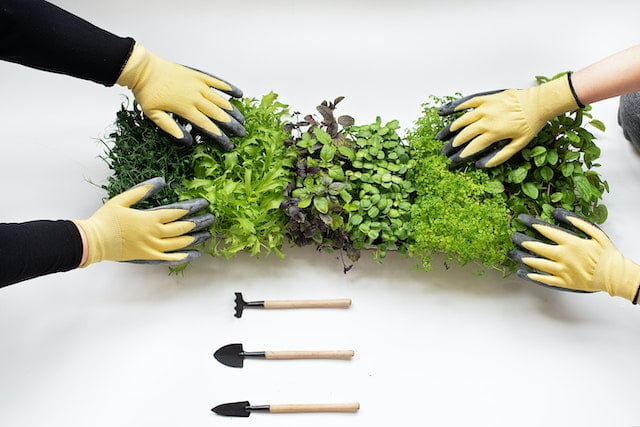
Get creative with your container choices to add visual interest and personality to your garden. Consider these unique ideas:
- Upcycled Containers: Repurpose old buckets, baskets, or even boots as quirky and eco-friendly plant containers.
- Vertical Gardens: Utilize vertical space by creating a vertical garden with wall-mounted containers or hanging baskets.
- Window Boxes: Install window boxes outside your windows to create a picturesque display of colorful flowers or cascading vines.
Top 10 Cheap container gardening ideas
Container gardening doesn’t have to be expensive. Here are some cheap container gardening ideas that can help you create a beautiful and budget-friendly garden:
1. Repurpose Household Items: Look around your house for items that can be repurposed as containers. Old buckets, baskets, crates, tin cans, yogurt containers, or even shoes can make unique and inexpensive planters. Just make sure to provide drainage holes if necessary.
2. Thrift Stores and Garage Sales: Check out thrift stores, yard sales, or flea markets for affordable containers. You can often find pots, buckets, and other gardening supplies at discounted prices. Give them a fresh coat of paint if needed to match your style.
3. DIY Containers: Get creative and make your own containers using recycled materials. For example, you can cut the tops off plastic bottles, paint them, and use them as small pots for seedlings. You can also repurpose old furniture like wooden crates or drawers to create larger planters.
4. Grow in Bags: Utilize grow bags, which are inexpensive and lightweight alternatives to traditional pots. They are made of fabric and provide good drainage for plants. Grow bags are especially useful for growing vegetables, herbs, and flowers.
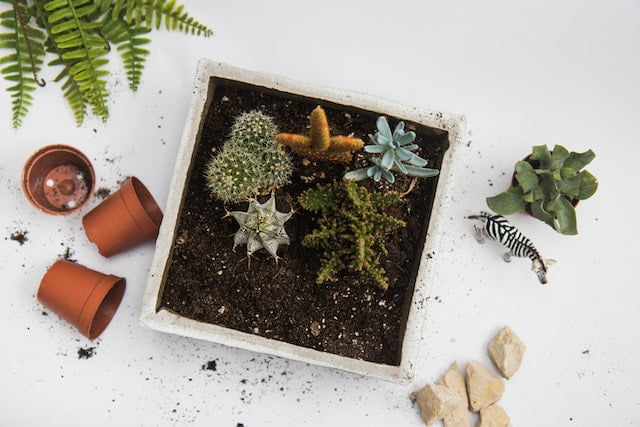
5. Vertical Gardening: Maximize your space by creating vertical gardens using inexpensive materials. Hang old shoe organizers, pallets, or wooden trellises on walls or fences, and plant herbs, small flowers, or trailing vines in pockets or containers attached to them.
6. Seed Starting Trays: Instead of purchasing individual seedling pots, use seed starting trays made of recycled materials like egg cartons or yogurt cups. These can serve as temporary containers until the plants are ready for transplanting.
7. Community Sharing: Check if there are community gardening initiatives or plant swap groups in your area. Often, gardeners are willing to share or trade excess pots, seeds, or plants, allowing you to acquire new items for your container garden without spending money.
8. Utilize Free Resources: Take advantage of free resources such as compost from your kitchen scraps or fallen leaves for mulch. You can also save seeds from your existing plants for future use, eliminating the need to purchase new seeds.
9. Share Costs with Others: Consider sharing the cost of gardening supplies, such as potting soil or fertilizer, with neighbors, friends, or family members who are also interested in gardening. By pooling resources, you can save money and still have everything you need.
10. Low-Cost Plant Choices: Select plants that are affordable, easy to propagate, or grow from seeds. Some annual flowers, herbs, and vegetables have low-cost varieties available, making them budget-friendly options for your container garden.
Top 10 Unique container gardening ideas
If you’re looking for unique container gardening ideas to add a special touch to your garden, here are some creative suggestions:
1. Vertical Herb Garden: Create a vertical herb garden by attaching a wooden pallet or ladder to a wall or fence. Hang small pots or repurposed containers on the rungs or slats and plant different herbs in each one. This not only saves space but also adds an interesting visual element to your garden.
2. Hanging Colander Planters: Repurpose metal colanders by using their handles to hang them. Line the colanders with coconut fiber or burlap to hold the potting mix, and plant colorful trailing flowers or cascading plants. Hang them from a sturdy hook or railing for a unique and whimsical display.
3. Teacup or Teapot Planters: Give old teacups, teapots, or coffee mugs a new purpose by turning them into miniature planters. Fill them with soil and plant small succulents, herbs, or tiny flowers. Arrange them on a tabletop or create a charming display on a vintage tray.
4. Wheelbarrow Garden: Use an old wheelbarrow as a portable container garden. Fill it with rich potting soil and plant a variety of flowers or vegetables. You can easily move the wheelbarrow around to follow the sun or change the garden’s look by replanting seasonally.
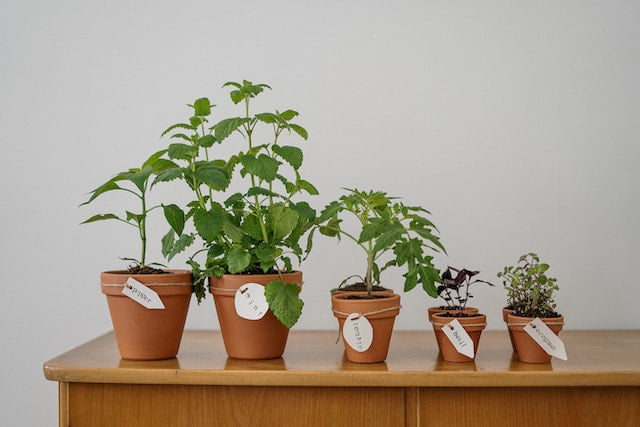
5. Toolbox Planter: Repurpose an old toolbox by transforming it into a rustic planter. Fill the compartments with potting soil and plant different herbs, flowers, or small vegetables in each section. It not only adds a unique twist to your garden but also serves as a conversation piece.
6. Birdcage Planter: Place a potted plant inside an open birdcage and use it as an interesting planter. Opt for trailing plants or vines that can weave through the bars, creating a whimsical and enchanting look. Hang the birdcage planter or place it on a tabletop or garden pedestal.
7. Rain Boot Garden: Give old rain boots a new life by turning them into quirky planters. Fill them with soil and plant colorful flowers or trailing plants. Arrange the boots in a row along a garden path or hang them on a fence to create a playful and eye-catching display.
8. Tiered Fountain Planter: Convert a tiered garden fountain into a stunning planter by filling the levels with a combination of cascading flowers, leafy plants, and ornamental grasses. The flowing water adds a serene and soothing element to your garden, turning it into a focal point.
9. Upcycled Tire Planters: Paint and repurpose old tires as unique planters. Stack them vertically to create a tower or arrange them horizontally to form a tiered planter. Fill each tire with soil and plant flowers or vegetables. The circular shape of the tires adds an interesting dimension to your garden.
10. Shoe Organizer Herb Garden: Hang a fabric shoe organizer with multiple pockets on a sunny wall or fence. Fill each pocket with potting soil and plant a different herb in each one. This allows you to easily access and harvest your favorite herbs while adding a functional and space-saving element to your garden.
These unique container gardening ideas can help you personalize your garden and create a one-of-a-kind space that reflects your style and creativity. Feel free to experiment and combine different ideas to make your container garden truly stand out.
People are also looking for
-
Can I grow vegetables in containers?
Yes, many vegetables can be successfully grown in containers, including tomatoes, peppers, lettuce, and herbs. Choose compact or dwarf varieties for smaller containers.
-
Do I need to use special soil for container gardening?
Yes, it is recommended to use high-quality potting soil specifically formulated for container gardening. Regular garden soil is often too dense and doesn’t provide adequate drainage.
-
How often should I water my container plants?
The frequency of watering depends on various factors such as plant type, container size, and environmental conditions. Monitor the soil moisture and water when the top inch feels dry.
-
Can I use containers indoors for gardening?
Absolutely! Indoor container gardening is a popular option for bringing nature indoors. Ensure your chosen plants receive adequate sunlight or consider using artificial grow lights.
-
What are some low-maintenance plants for container gardening?
Some low-maintenance plants for containers include succulents, herbs like rosemary and thyme, and ornamental grasses. These plants are relatively drought-tolerant and require less frequent watering.
Final Thoughts on What is Container Gardening
If you’ve ever wondered, “What is container gardening?” it is an excellent solution for individuals with limited space who still want to experience the joys of gardening. By utilizing containers, you can create a thriving garden in even the smallest of areas. Container gardening offers flexibility, accessibility, and the opportunity to grow a wide variety of plants, from beautiful flowers to fresh herbs and even vegetables.
So, whether you have a balcony, patio, or windowsill, don’t let limited space hold you back from enjoying the benefits of gardening. Start your container garden today and bring nature closer to your home. Embrace the wonders of container gardening and watch your plants flourish in their portable homes. Happy gardening!

